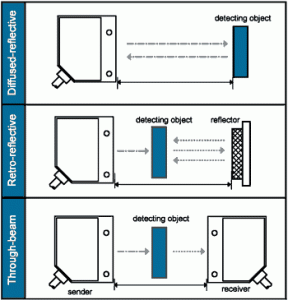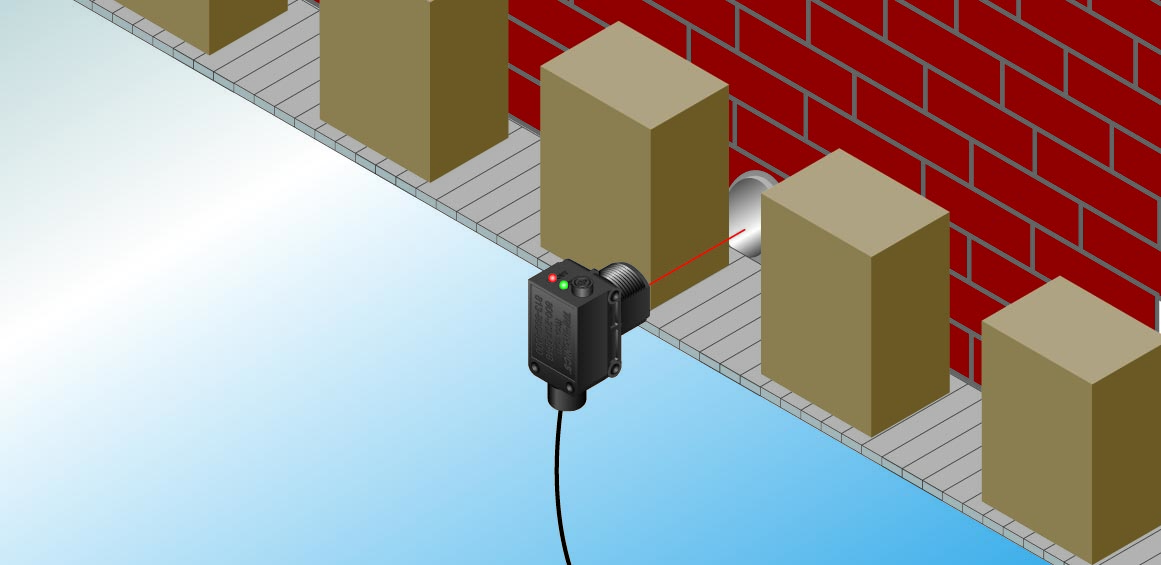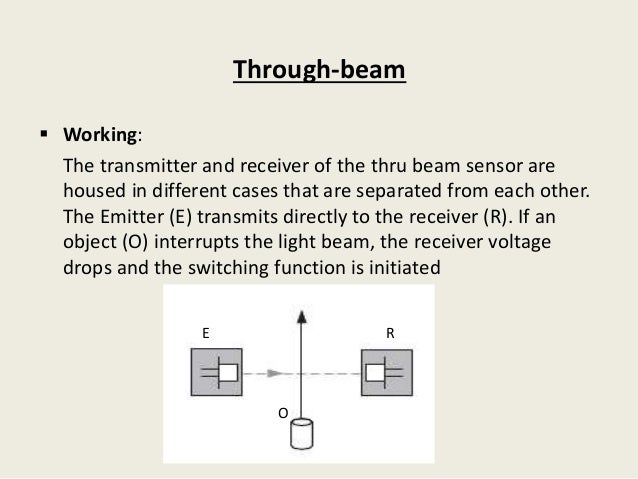The through beam sensor is supplied ready to operate plug and play set at the max sensing range this is sufficient if the through beam sensor can operate with maximum excess gain highest contrast the following setting procedures should only be necessary in less straightforward applications for example if partly transparent objects must be detected.
Through beam sensor operation.
Detect the presence or absence of an object moving at high speeds with a light beam.
Photoelectric sensors use a beam of light to detect the presence or absence of an object.
Light emitted from the transmitter is aimed directly at the receiver.
Through beam sensors sensing method.
The sensing range is fixed and defined as the focus point.
A photoelectric sensor is an equipment used to discover the distance absence or presence of an object by using a light transmitter often infrared and a photoelectric receiver.
Item explanatory diagram meaning dark on operation dark onthe dark on operating mode is when a through beam sensor produces an output when the light entering the receiver is inter rupted or decreases.
The through beam sensor detects objects and materials without contact and indicates their presence by a switching signal range.
Conceptual through beam system to detect unauthorized access to a secure door.
When an object breaks the beam of light between the emitter and receiver the receiver s output changes state.
Thru beam sensors in through beam photoelectric sensing or opposed mode the transmitter and emitter are in separate housings.
4 installation side lens front lens 1 2 1 2 1 1.
In convergent beam mode the transmitter lens is focused to an exact point in front of the sensor and the receiver lens is focused to the same point.
The sensor is then able to detect an object at this focal point plus or minus some distance known as the sensing window.
This technology is an ideal alternative to inductive proximity sensors when you require long sensing distances or when the item you want to sense is non metal.
If the beam is interrupted the detector triggers an alarm.
The emitter and receiver are installed opposite each other to enable the light from the emitter to enter the receiver.




.png?w=1042)










































